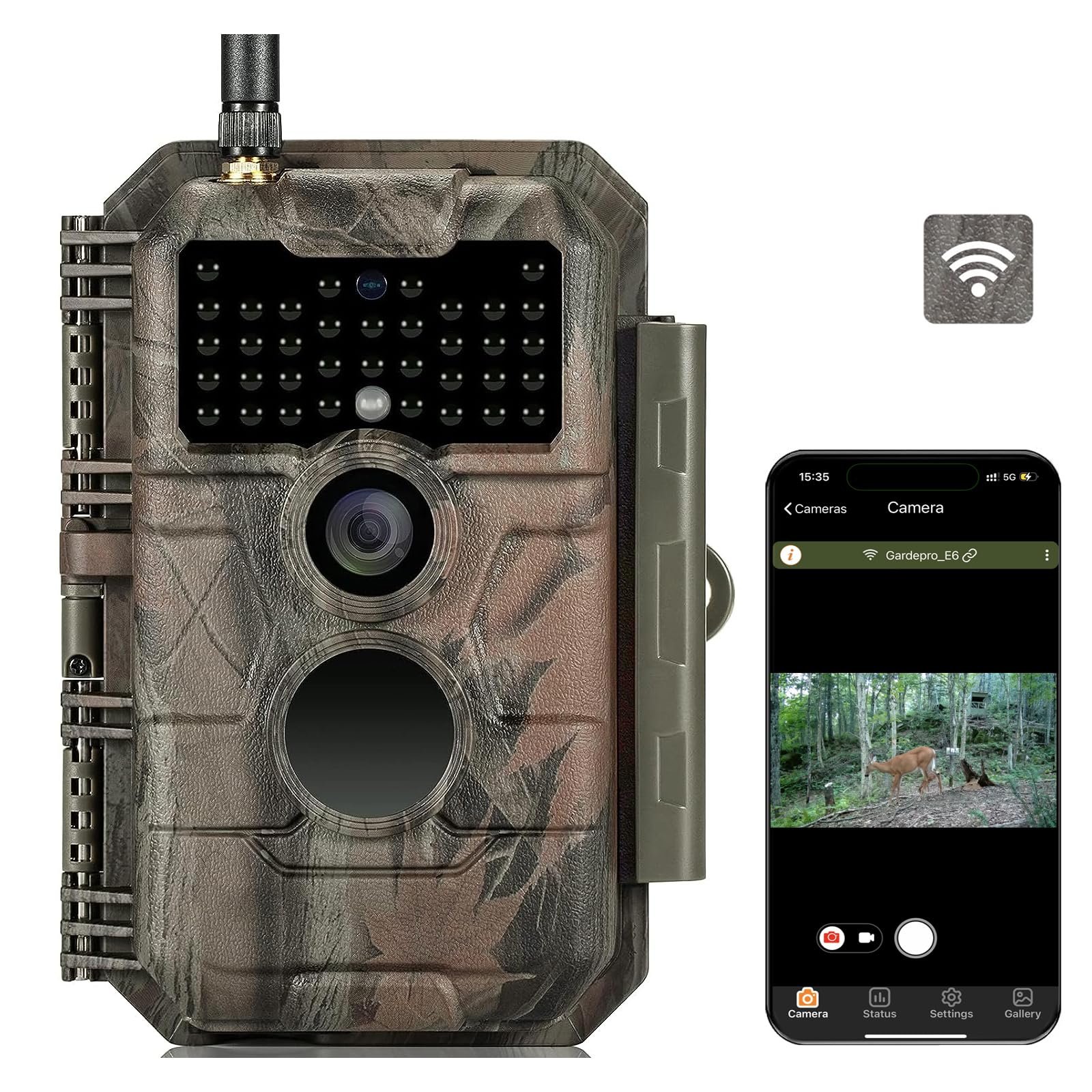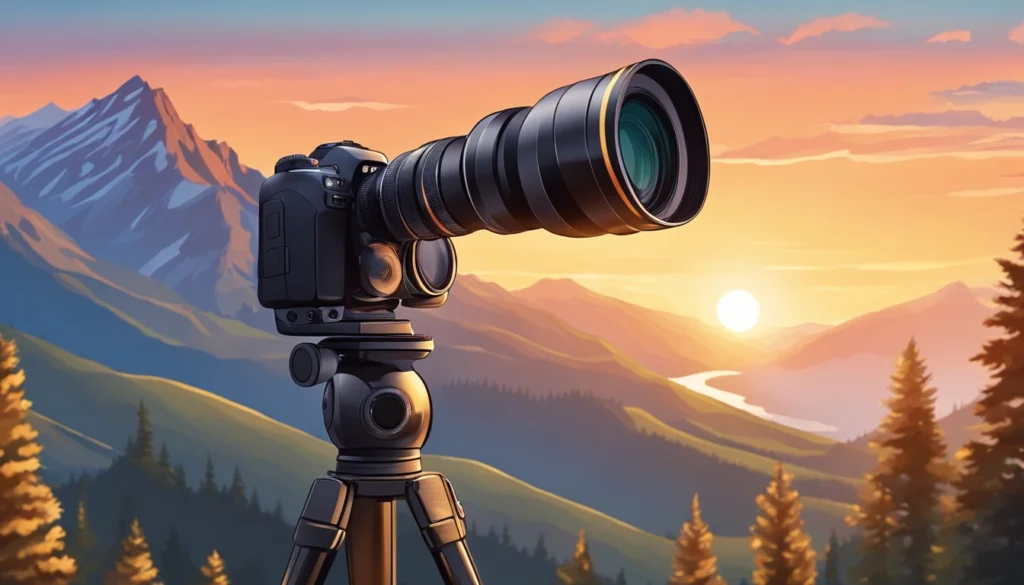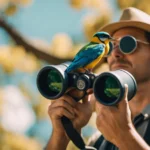Wildlife photography captures the beauty and rawness of nature, offering a glimpse into the lives of animals in their natural habitats. This genre of photography requires not only technical skills but also specialized equipment designed to endure various outdoor conditions while delivering high-quality images. You may find yourself wanting to document everything from birds in flight to elusive mammals that roam at dusk, which makes having the right camera essential for success in this field.
Choosing a camera for wildlife photography involves considering several key factors. Speed and responsiveness are critical as wildlife is often unpredictable, requiring quick shooting bursts to capture the perfect moment. Additionally, image quality, autofocus performance, and durability against the elements can significantly influence your results. Look for a camera that offers a good balance of features tailored to your specific shooting environment, whether you’re in a lush wetland or a parched desert landscape.
Investing in a camera that meets these criteria ensures you are prepared for the challenges of wildlife photography. As you explore your options, consider what features align with your photography goals, and make informed decisions based on your needs. This foundation will guide you as you look at the best cameras available for capturing stunning wildlife images.
Best Camera for Wildlife Photography
If you’re looking to capture stunning wildlife images, selecting the right camera is essential. The following list highlights top choices that excel in various aspects of wildlife photography, ensuring you can get that perfect shot while out in the field.
Canon EOS Rebel T7 DSLR Camera

This camera is a solid choice for those venturing into wildlife photography and looking to elevate their skills.
Pros
- Excellent image quality with a 24.1 MP sensor.
- User-friendly features, great for beginners.
- Built-in Wi-Fi and NFC for easy sharing.
Cons
- Limited performance in low light compared to higher-end models.
- Continuous shooting speed may be slower for fast-moving subjects.
- Heavier than some compact options, which might affect portability.
With the Canon EOS Rebel T7, stepping up from a smartphone to a DSLR can feel effortless. Its APS-C sensor captures vibrant details, making it suitable for both casual wildlife observation and more serious photography outings. The scene intelligent auto mode automatically adjusts settings, enabling you to focus on your compositions without technical distractions.
The camera’s built-in Wi-Fi and NFC capabilities simplify sharing your favorite shots on social media. This means that after a day spent capturing images of local wildlife, you can easily post your experiences online for friends and family to enjoy.
While it shines for entry-level users, the T7 does have some limitations. Its low light performance could be better, which might hinder your ability to capture those elusive nocturnal animals. Additionally, although the autofocus is competent, faster subjects may present a challenge during action-packed moments.
Overall, if you are seeking a reliable camera that bridges the gap between smartphones and advanced photography, the Canon EOS Rebel T7 is worth considering.
Panasonic LUMIX FZ80D

This camera is a solid choice for wildlife photography enthusiasts who need versatility and high-quality imaging.
Pros
- Exceptional zoom capabilities allow for detailed close-ups of distant subjects.
- 4K video recording provides sharp video quality, making it easy to capture fast action.
- Built-in image stabilization minimizes blur, even at maximum zoom.
Cons
- Price may be considered high for newcomers to photography.
- Some users may find it less portable due to its size.
- Limited low-light performance compared to higher-end DSLR cameras.
The Panasonic LUMIX FZ80D features a remarkable 60x zoom lens, enabling you to zoom in on wildlife from a safe distance. This means you can capture vibrant details without getting too close to your subject. The wide 20mm angle also ensures you can take stunning landscape shots when required.
Its advanced 4K video mode allows for high-resolution recording, ideal for fast-moving subjects. You can even pull out still images from your videos, providing flexibility for capturing not just fleeting moments, but also excellent photos.
Furthermore, the camera has an impressive image stabilization system. It effectively reduces any hand-shake, allowing for clearer shots, especially when working with maximum zoom. While it sits at a higher price point than some options on the market, its features cater to both beginners and enthusiasts who are serious about wildlife photography.
Canon EOS Rebel T7 Bundle

This Canon EOS Rebel T7 offers a solid option for wildlife photography, especially with a comprehensive accessory bundle.
Pros
- High-resolution 24.1MP sensor captures impressive detail.
- Includes multiple lenses for versatile shooting options.
- Affordable entry into DSLR photography with quality performance.
Cons
- Autofocus may be slower compared to newer models.
- Some accessories may not meet professional standards.
- Manual settings are best for optimal results, which may require a learning curve.
The Canon EOS Rebel T7 comes equipped with a 24.1MP APS-C CMOS sensor, delivering clear, vibrant images that are perfect for capturing wildlife in action. Accompanied by an array of lenses, including an 18-55mm lens and a powerful 500mm lens, this camera gives you flexibility to shoot from various distances while maintaining image quality.
While the camera excels in many areas, the autofocus system can be slow, which might be frustrating for fast-moving subjects. Manual focus is a preferred method for photographers who want greater control over their shots. Realistically, achieving the best results will depend on your willingness to use its manual settings and adjust to different shooting environments.
This refurbished model is part of Amazon’s Renewed program, ensuring it has been professionally inspected and tested. Despite the minor concerns regarding autofocus speed and some accessory quality, it remains a compelling choice for those entering the wildlife photography realm with a reliable camera setup.
GardePro E6 Trail Camera

This camera is a solid choice for wildlife enthusiasts looking for reliable performance and impressive image quality.
Pros
- Innovative Wi-Fi connectivity with a dedicated app for easy operation
- High-resolution 48MP images and 1296P videos for stunning detail
- No glow night vision ensures stealthy nighttime observations
Cons
- Wi-Fi connection requires close proximity, limiting remote access
- Nighttime images may lack clarity compared to daytime shots
- Setup may require some time to familiarize with features
The GardePro E6 shines in its ability to capture sharp photos and videos, making it suitable for monitoring wildlife. With its impressive resolution, it is capable of delivering crystal clear images that highlight intricate details. This makes it particularly beneficial for those interested in tracking and studying animal behavior.
Equipped with innovative Wi-Fi technology, the camera allows you to control its functions directly from your smartphone. This feature, paired with the easy-to-use app, enhances user experience, enabling you to manage settings and view live footage seamlessly.
While the camera excels in many areas, some users may encounter challenges with its Wi-Fi connectivity. The requirement to stay within close range can be limiting, especially in expansive outdoor settings. Night photographs may also not reach the same clarity seen in daylight images, which could be a consideration for potential buyers.
Sony Alpha a6400 Camera

This camera is a compelling choice for wildlife enthusiasts who value portability without sacrificing performance.
Pros
- Compact and lightweight design, perfect for outdoor adventures.
- Excellent autofocus capabilities for fast-moving subjects.
- Impressive image quality, even in varying light conditions.
Cons
- Limited battery life compared to some competitors.
- Kit lens may not meet the needs of advanced users.
- Some users find the menu system complex.
The Sony Alpha a6400 features a strong combination of portability and advanced imaging technology. Its APS-C sensor delivers sharp, vibrant images, making it suitable for capturing the stunning details of wildlife in their natural habitat.
With the capability to shoot at 11 frames per second, you can easily capture fast-moving animals without missing a moment. Enhanced autofocus ensures that your subjects stay sharp, even when they are in motion. This is especially advantageous when photographing elusive creatures.
While the kit lens offers versatility, you might explore additional lenses to fully utilize the camera’s potential. Battery life, though decent, might require you to carry a spare unit during prolonged outings. Overall, the Sony Alpha a6400 stands out as a reliable option for wildlife photography enthusiasts looking for a blend of quality and convenience.
Buying Guide
Choosing the right camera for wildlife photography requires careful consideration of various features. Here are some key aspects to focus on:
Sensor Type
- DSLR vs. Mirrorless: Determine which type appeals to you. DSLRs often have superior battery life, while mirrorless cameras offer lightweight designs and advanced features.
- Sensor Size: A larger sensor captures more light, which is beneficial for low-light conditions.
Megapixels
Higher megapixels provide more detail, but are not the sole determinant of image quality. Aim for a camera with at least 16-20 megapixels for decent enlargements.
Autofocus System
- Autofocus Points: Look for a camera with a high number of autofocus points. This is crucial for tracking fast-moving subjects.
- Continuous Shooting Speed: A higher frames-per-second (FPS) rate allows more shots during critical moments.
Lens Compatibility
Wildlife photography often requires varied lenses:
- Telephoto Lenses: Essential for capturing distant subjects.
- Macro Lenses: Useful for photographing smaller wildlife.
Durability and Weather Sealing
A robust, weather-sealed camera protects against environmental elements. This ensures reliability in diverse conditions.
Ergonomics and Weight
The camera’s physical attributes impact your photography experience. Choose a lightweight option for extended outings and ensure the grip feels comfortable.
Keep these features in mind to make an informed decision that meets your wildlife photography needs.
Frequently Asked Questions
When choosing a camera for wildlife photography, consider crucial features that enhance your shooting experience. Specific factors influence your choice, including camera type, functionality, and cost.
What features should beginners look for in a camera for wildlife photography?
Beginners should prioritize a fast autofocus system to capture moving subjects. A high frame rate helps with burst shooting, while a good image stabilization system reduces blur from camera shake.
Which is more suitable for wildlife photography: mirrorless or DSLR cameras?
Mirrorless cameras tend to be lighter and quieter, making them excellent for wildlife settings. DSLRs often provide longer battery life and optical viewfinders, which can be beneficial in varying lighting conditions.
How do professional wildlife photographers choose their cameras?
Professionals typically assess factors like lens compatibility, autofocus performance, and weather sealing. They also consider their primary subjects to ensure their camera meets specific requirements.
What is the importance of megapixels in wildlife photography?
Megapixels affect image resolution, which is crucial for cropping photos while maintaining detail. Higher megapixel counts allow for larger prints and better quality in post-processing adjustments.
What camera modes are best suited for capturing wildlife?
Shutter priority mode is beneficial for freezing motion, while aperture priority can help achieve a desirable depth of field. Manual mode offers complete control, allowing you to tailor settings to changing conditions.
What are some cost-effective cameras for wildlife photography that professionals recommend?
Budget-friendly options include models like the Canon EOS Rebel T8i and Nikon D5600. These cameras provide solid performance with good autofocus and acceptable frame rates for wildlife enthusiasts without high costs.


